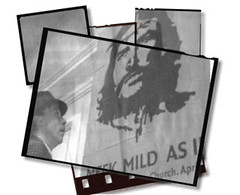Conclusions concerning exilic thought
 As seen from this brief sampling of texts the exile was still a very powerful motif used in the literature of the Second Temple period, although the term exile can be misleading in that it no longer refers to the initial forced diaspora under the Babylonians, nor does it refer to Israel’s displacement from the land, rather what we see in these texts is that the idea of exile had evolved into a shorthand for the complex set of beliefs concerning Israel’s present plight and their continuing future restoration.[1] Exile as non-restoration was a powerful set of ideas that were used in this period, even if they were never universally applied in any normative way.[2] In the Judaism(s) of the Second Temple period we see that the ideas of exile/return (restoration) were used in multifarious ways to serve the ideological needs of the various communities in which they spoke to. If there was continuity in the use of the exile/return (restoration) in this period it was at the basic conceptual level, namely that the end should recapitulate the beginning (the Urzeit/Endzeit or protology/eschatology) pattern.[3] But despite the wide variety of uses in this period it is evident that the basic thought structure was still used and still maintained currency with the various Jewish groups.
As seen from this brief sampling of texts the exile was still a very powerful motif used in the literature of the Second Temple period, although the term exile can be misleading in that it no longer refers to the initial forced diaspora under the Babylonians, nor does it refer to Israel’s displacement from the land, rather what we see in these texts is that the idea of exile had evolved into a shorthand for the complex set of beliefs concerning Israel’s present plight and their continuing future restoration.[1] Exile as non-restoration was a powerful set of ideas that were used in this period, even if they were never universally applied in any normative way.[2] In the Judaism(s) of the Second Temple period we see that the ideas of exile/return (restoration) were used in multifarious ways to serve the ideological needs of the various communities in which they spoke to. If there was continuity in the use of the exile/return (restoration) in this period it was at the basic conceptual level, namely that the end should recapitulate the beginning (the Urzeit/Endzeit or protology/eschatology) pattern.[3] But despite the wide variety of uses in this period it is evident that the basic thought structure was still used and still maintained currency with the various Jewish groups.
[1] Steven M. Bryan, Jesus and Israel's Traditions of Judgement and Restoration (Cambridge: Cambridge University Press, 2002), 13; F. Gerald Downing, "Exile in Formative Judaism," in Making Sense in (and of) the First Christian Century, ed. F.Gerald Downing (JSNTSup 197; Sheffield: Sheffield Academic Press, 2000), 150; Klyne R. Snodgrass, "Reading and Overreading the Parables in Jesus and the Victory of God," in Jesus & the Restoration of Israel: A Critical Assessment of N.T. Wright's Jesus and the Victory of God, ed. Carey C. Newman (Downers Grove: InterVarsity Press, 1999), 62.
[2] E. P. Sanders, Jesus and Judaism (Philadelphia: Fortress Press, 1985), 87, refers to the exile and return motif as 'Jewish restoration eschatology,' yet cautions that the expectation of restoration is neither clear nor consistent in the textual corpus of the Second Temple period and therefore one cannot refer to an orthodox theology of hope. Thus in referring to a motif of exile and return, I am speaking of a narrative whose basic outline is clear; god will restore his covenant people as promised, this much is clear, even if the detailed plotline is developed in diverse ways in the surviving literature. The fact that Wright seems to describe the exile as a basic belief among all Judaism(s) has been the main criticism of his portrayal of the exile.
[3] Aune, "From the Idealized Past," 147.




No comments:
Post a Comment